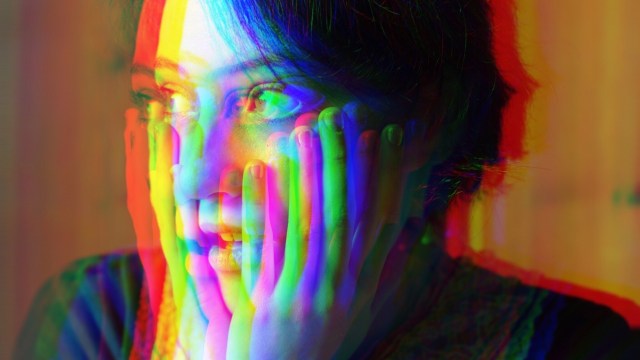What Really Put The ‘Bang’ In The Big Bang?
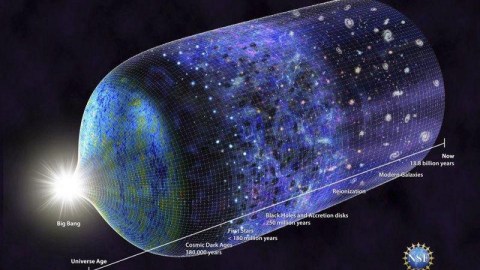
Scientists actively researching this have known the answer for quite some time. It’s time for everyone to catch up.
The Big Bang happened 13.8 billion years ago, and is generally regarded as the start of the Universe as we know it. The Universe we see is expanding, cooling, and gravitating into an ever-clumpier state, which means earlier on it must have been denser, hotter, and more uniform.
In the earliest moments that we can imagine, there must have been matter, antimatter, radiation, and any-and-all types of particles that there was enough energy to create. All the matter and energy presently visible in our Universe today was contained in a volume of space no bigger than a city block, and has since expanded to extend for more than 46 billion light-years in all directions.
Still, all of that energy had to come from somewhere, and that’s the big question of what put the “bang” in the Big Bang? Fortunately, science already has given us a tremendously successful answer. It’s time for the rest of the world to learn about it, too.
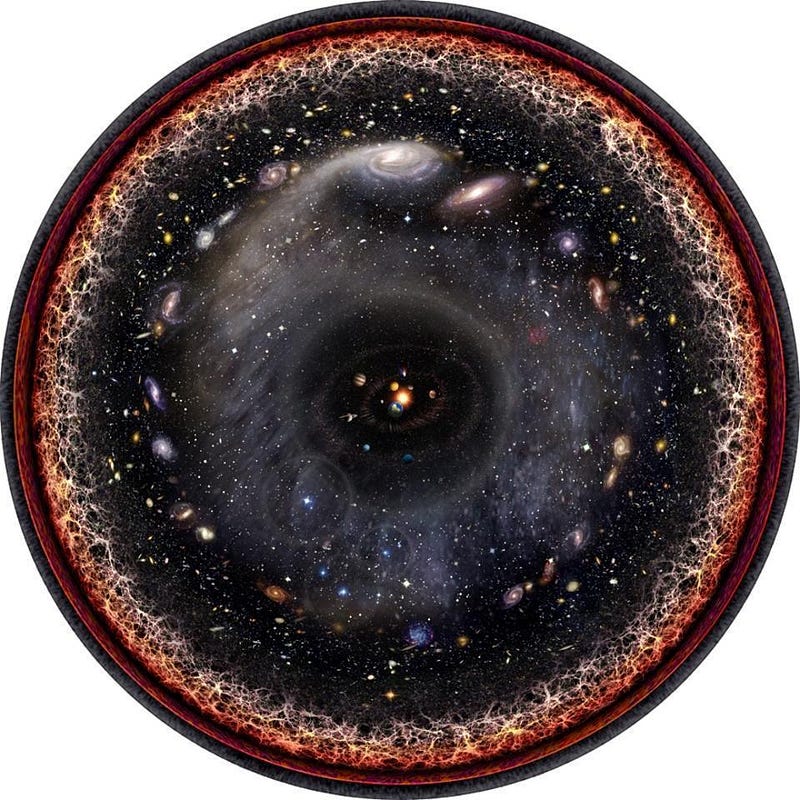
There are three big misconceptions about the Big Bang, and you’ll never understand what put the “bang” in it if you’ve fallen for any of them. They are as follows:
- The Big Bang was a massive explosion, like a supernova, but encompassing the entire Universe rather than a single star.
- The Big Bang refers to a state of arbitrarily high densities, temperatures, and energies, and we can extrapolate back as far as we like.
- The Big Bang implies a singularity: a birth of space and time, and putting the “bang” in it means causing the entire Universe itself to emerge from a state of nothingness.
Before you can understand where the Big Bang itself came from, you have to understand what the Big Bang both is and is not.
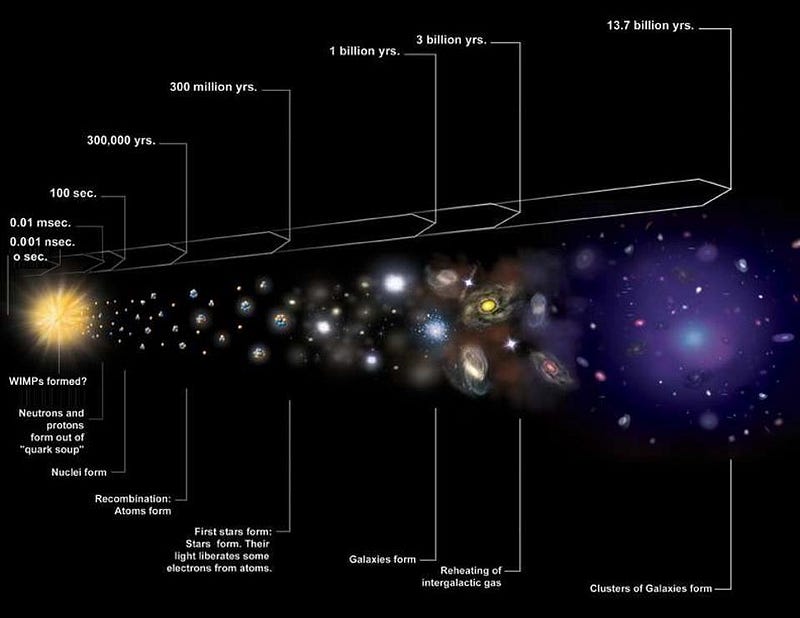
The Big Bang is not an explosion. Did you read one of the recent science stories from the start of November claiming that scientists have unlocked how the Big Bang explosion was ignited? It was quite an extraordinary claim, but there’s no truth to it. A very poorly written (and incorrectly titled) press release, written by a non-scientist, is to blame.
Explosions may be real phenomena, but they have nothing to do with the Big Bang. The research that was highlighted was about a transition from subsonic burning to supersonic detonations in fuel-rich environments, which has applications from terrestrial explosions to stellar-scale ones. In and of itself, it’s a cool find with a few astrophysical applications.
Just not to the Big Bang in any way whatsoever. Nothing explodes in the Big Bang. Instead, the Big Bang is described by a hot, dense state that simply expands and cools. That’s it: no explosion or conflagration of any type.
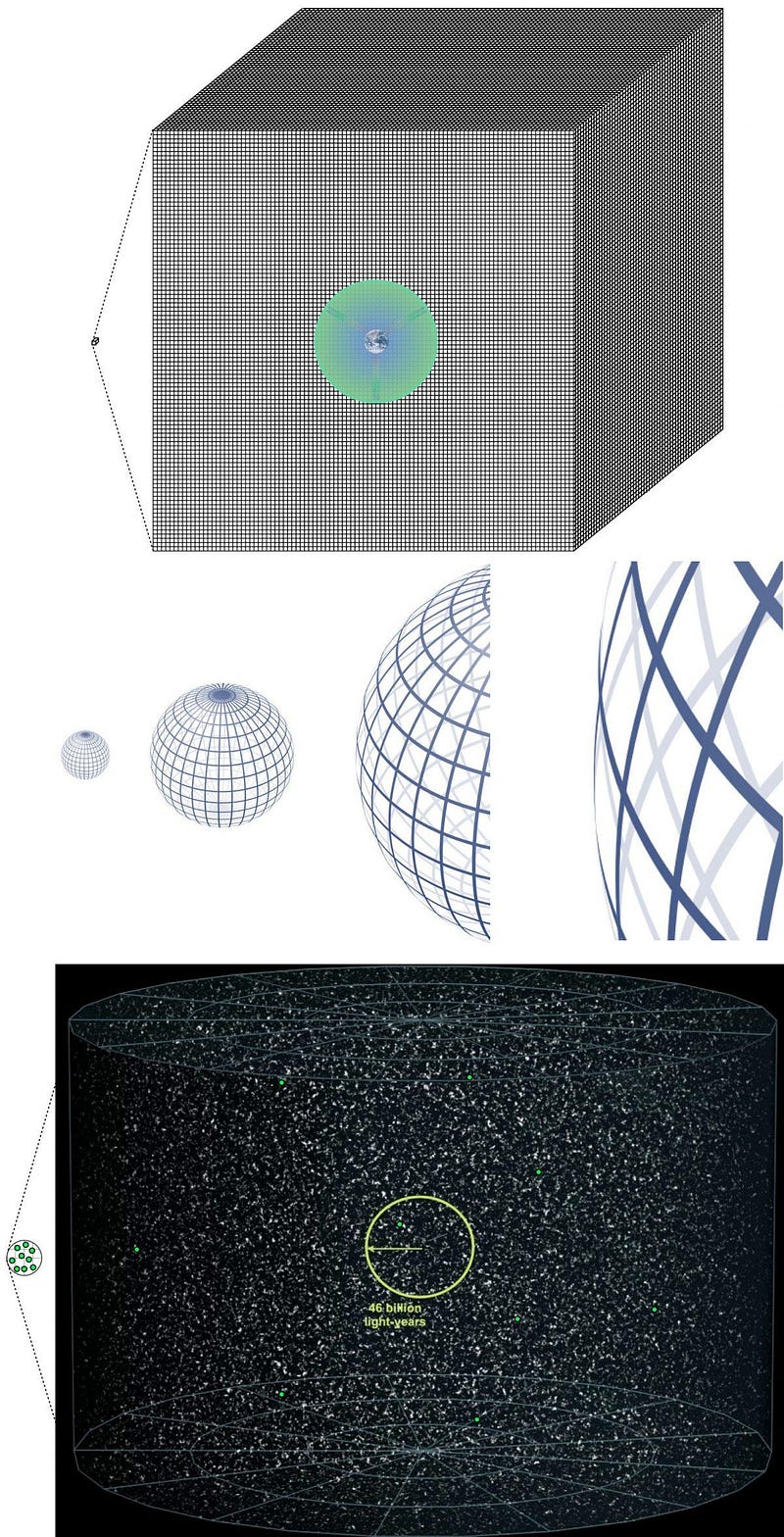
The Big Bang cannot go back to arbitrarily high densities. It’s so tempting to extrapolate a physical system as far back as you can imagine, but the Universe itself won’t let us. There’s a limit to how hot and dense the Universe could have possibly gotten in its earliest stages, as we see by looking at observable properties imprinted on the Universe itself.
If the Universe had reached arbitrarily high temperatures and densities, we’d expect to see leftover high-energy relics (like magnetic monopoles), but none of them exist in our Universe despite comprehensive searches. The initially overdense and underdense regions that lead to the cosmic structure in our Universe are too small in magnitude to originate from an arbitrarily high-energy initial state. And furthermore, we see that these initial fluctuations exist on scales larger than light could have traversed since the Big Bang.
There are many things we’d expect to find in our Universe if we reached these arbitrarily high temperatures; none of them exist in reality.
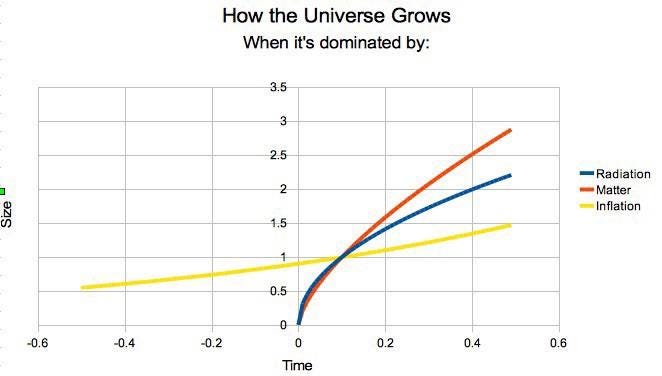
The Big Bang is agnostic about, and cannot itself have started from, a singularity. The onset of the hot Big Bang is marked by the earliest time that we can describe the Universe as being:
- hot,
- dense,
- filled with matter (and antimatter) and radiation,
- both expanding and cooling,
- and containing the progenitor particles that lead to the planet, star, and galaxy-rich Universe we have today.
It’s true that this occurred 13.8 billion years ago, but it’s also true that the Big Bang wasn’t the start of the Universe. Instead, the start of the hot Big Bang is coincident with the end of a different state: cosmic inflation. Inflation stretches the Universe flat, gives all of space the same initial conditions (with quantum fluctuations superimposed atop them), and explains why the expansion rate and the energy density balances so perfectly. Wherever our observational limits reach the precision necessary to test inflation’s predictions, inflation passes the test.
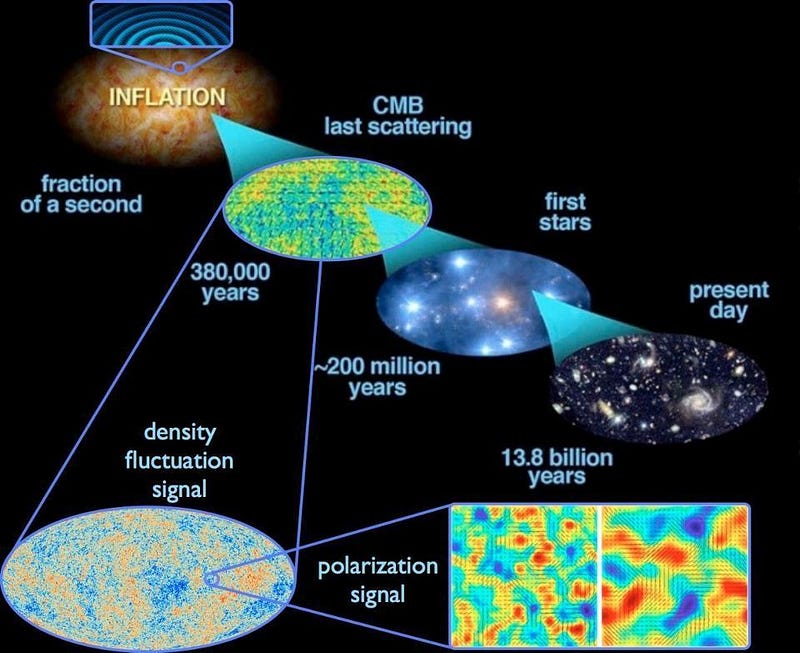
So if the Universe was inflating before the onset of the hot Big Bang, and then inflation ended and the hot Big Bang again, what can we reasonably state about what put the “bang” in the hot Big Bang?
The answer must be that transitional phase that occurs at the end of inflation. During inflation, the Universe is filled with a large amount of energy inherent to the fabric of space itself. We do not know how long inflation endures for, but I like to think of it like a ball rolling across a surface of blocks, all held together by their mutual tension. As the ball rolls over the blocks, it pushes them down, but most spots are sturdy enough that the ball passes without knocking anything out of place.
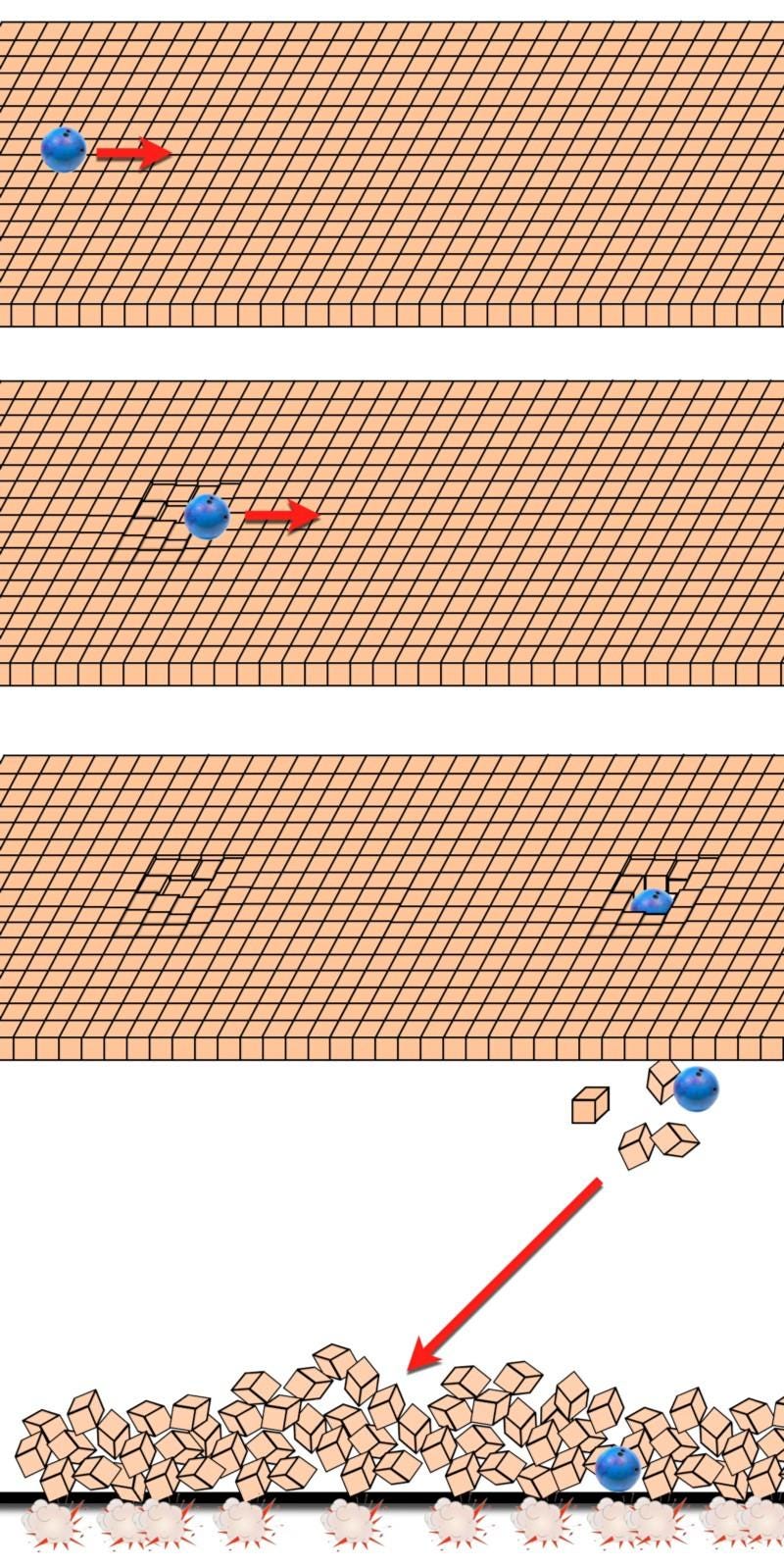
However, if the ball happens to roll too close to a weak point, it will plunge through the blocks, causing a cascade where they all fall down. When the ball and the blocks fall and crash down, inflation comes to an end and the hot Big Bang begins.
That’s just a visualization, however. If you’re interested in the physics of what goes on during this process, you’ll start to ask the key question: how? How does inflation end; how does the energy inherent to space get converted into particles, antiparticles and radiation; how does the Universe become hot and dense like it must at the start of the hot Big Bang?
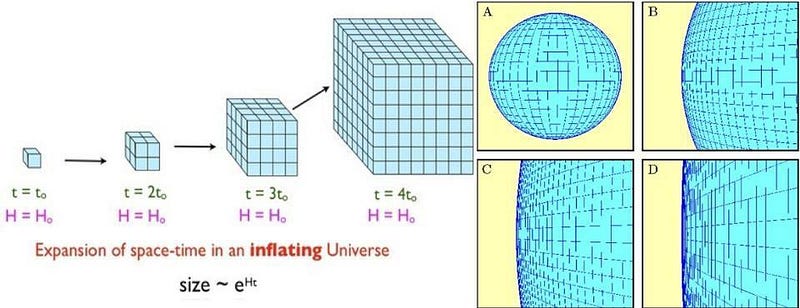
The name we give to this process is “cosmic reheating,” which is a bit of a misnomer (since who knows if it was ever “hot” before the start of the hot Big Bang), but still describes how that transition takes place. Energy, remember, can always be converted from one form into another without being created or destroyed through any process in quantum physics. What cosmic reheating does is take the energy inherent to space itself — regardless of what form or field that energy is inherent to — and allows it to couple to at least one of the particles in the Standard Model.
The details of how cosmic reheating occurs are dependent on which particular model of inflation a theorist invokes, with details that go well beyond the scope of a popular article.
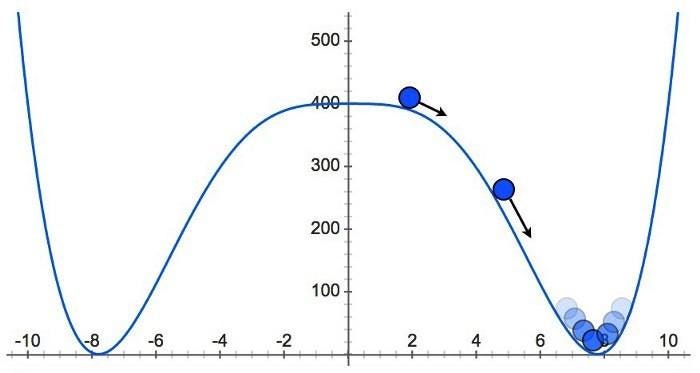
But everyone agrees on the following:
- you can model inflation as a potential,
- where being high up on the hill of the potential means inflation is still ongoing,
- with a valley that represents its lowest point,
- and that inflation will end when the “field” rolls into the valley.
So long as the inflationary field couples to at least one of the Standard Model particles in a non-negligible fashion, all of that inflationary energy will get converted into that particle — and in short order, into all the energetically allowable Standard Model particles and antiparticles — in a brief transitional period. Inflation ends, cosmic reheating occurs, and the hot Big Bang begins, all in a proverbial instant.

So what is it that put the “bang” in the hot Big Bang? It’s the end of inflation. There is a state prior to the start of the hot Big Bang that set it up and provided it with the initial conditions of being spatially flat, the same energy density everywhere, always below a certain threshold temperature, and uniform with quantum fluctuations superimposed atop it on all scales.
When this inflationary state ended, the process of cosmic reheating transformed that energy — which had previously been inherent to the fabric of space itself — into particles, antiparticles and radiation. That transition is what put the “bang” in the hot Big Bang, and led to the birth of the observable Universe as we know it. The details of this were first worked out in the 1980s, back when inflation was just a theoretical idea, and have been confirmed by observations taken in the 1990s, 2000s, and 2010s. For decades, scientists have known what put the “bang” in the Big Bang. At last, now the general public can share in that knowledge, too.
Ethan Siegel is the author of Beyond the Galaxy and Treknology. You can pre-order his third book, currently in development: the Encyclopaedia Cosmologica.





